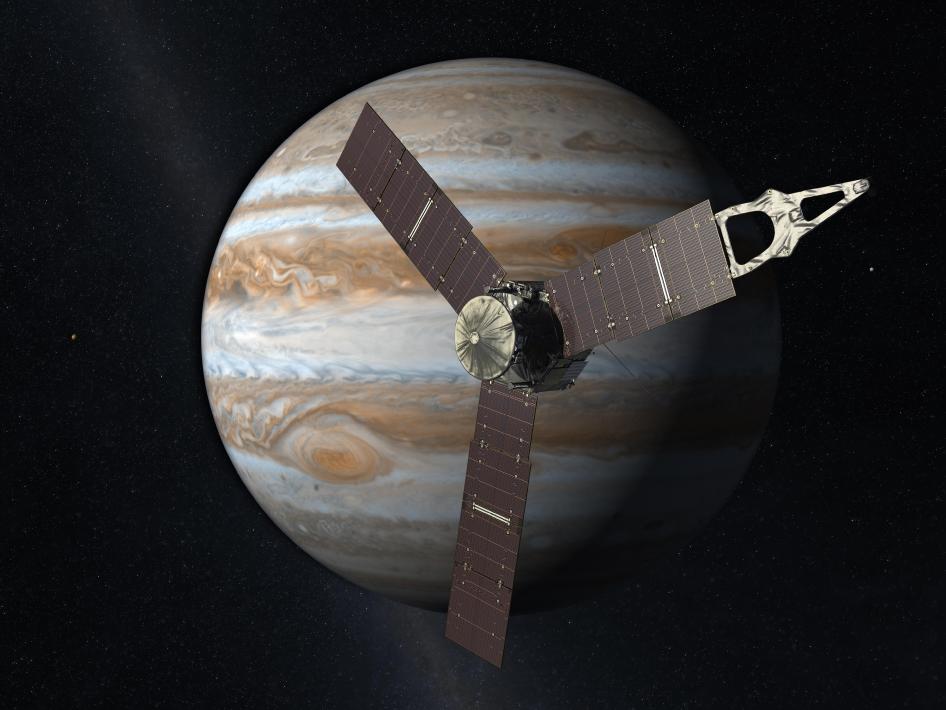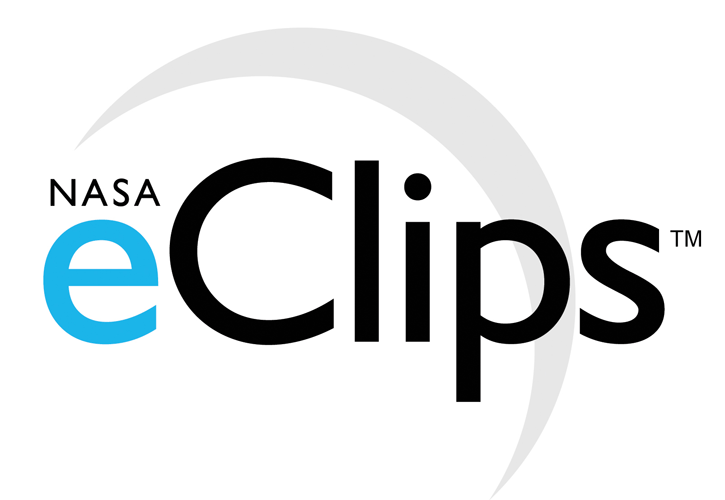
|
Exploring Jupiter with Juno |
||||||||
|
|||||||||
 |

Mathematics Skill or Topic Area:
Number Theory and Fractions
Next Gen Science Standards: ESS1: Earthís Place in the Universe; ETS2: Links Among Engineering, Technology, Science, and Society; PS2: Motion and Stability: Forces and Interactions
Common Core ELA for Science: RST.6-8.2. Determine the central ideas or conclusions of a text; provide an accurate summary of the text distinct from prior knowledge or opinions. RST.6-8.8. Distinguish among facts, reasoned judgment based on research findings, and speculation in a text. RST.6-8.9. Compare and contrast the information gained from experiments, simulations, video, or multimedia sources with that gained from reading a text on the same topic.
Common Core Math Standard: CC.6.NS.1: Interpret and compute quotients of fractions, and solve word problems involving division of fractions by fractions.

Video Engagement: What is the Solar System? Find out why one amateur astronomer created an amazing graphic of the 88 largest objects in our solar system. Learn just what makes up a solar system and find out how we classify the thousands of objects in our own solar system (6 minutes). View Program
|
Engage your students with a press release: NASA's Juno Spacecraft Refines its Path to Jupiter
NASA's solar-powered Juno spacecraft successfully refined its flight path Wednesday
with the mission's first trajectory correction maneuver. The maneuver took place on Feb. 1, 2012. It is the first of a
dozen planned rocket firings that, over the next five years, will keep Juno on course for its rendezvous with Jupiter.
"We had a maneuver planned soon after launch but our Atlas V rocket gave us such a good ride we didn't need
to make any trajectory changes," said Rick Nybakken, Juno project manager from NASA's Jet Propulsion Laboratory
in Pasadena, Calif. "It is good to get another first under our belt. This burn couldn't have gone any better."
The trajectory correction maneuver, which adjusts the spacecraft's flight path, began at 1:10 p.m. Eastern Standard Time (EST) on Feb. 1.
The Juno spacecraft's thrusters fired for 25 minutes, consumed about 6.9 pounds (3.11 kilograms) of fuel and changed
the spacecraft's speed by 3.9 feet per second (1.2 meters per second). The next big maneuver for Juno will occur in late August, 2012 when Juno executes
its first of two deep space maneuvers to set the stage for its Earth flyby on its way to Jupiter.
Launched on Aug. 5, 2011, Juno is 182 days and 279 million miles (449 million kilometers) into its five-year, 1,740-million-mile
(2,800-million-kilometer) journey to Jupiter. Once in orbit around Jupiter, the spacecraft will orbit the planet's poles 33 times and use its
collection of eight science instruments to look beneath the gas giant's clouds to learn more about Jupiter's origins. It will also try to learn more about Jupiter's
atmosphere and magnetic field, and to look for signs of a solid planetary core.
Juno's name comes from Greek and Roman mythology. The god Jupiter drew a veil of clouds around himself to hide,
and his wife, the goddess Juno, was able to peer through the clouds and reveal Jupiter's true nature.
Press release date line - February 2, 2012 Press release
location: [
Click Here ] |
|
Explore math connections with SpaceMath@NASA
Problem I - The Moons of Jupiter - Relative Sizes - Students will use fractions to compare the sizes of several of Jupiter's moons. [ Open PDF ]
Problem II -
The Relative Sizes of the Jovian Moons. -
The moon Europa is 3/5 the diameter of Ganymede, and Io is 6/5 the diameter of Europa.
How big is Io compared to Ganymede? [Answer: 3/5 x 6/5 = 18/25]
Explain
your thinking: Write
your own problem - Using information
found in the Math Connection problems, the press release or the video
program, create your own math problem. Explain why you set the problem up this
way, and how you might find its answer.
Evaluate
your understanding: Challenge Problem: The Moons of Jupiter - Orbital Synchrony
- Students work with the orbit periods of several of Jupiter's moons and determine through the use of simple fractions when the periods of the moons match up.
[ Open PDF ]

NASA / JPL
3-D Solar System
Extend your new knowledge - Visit Jupiter using the EOSS simulator and explore how Juno will orbit Jupiter and creates high-resolution maps of its atmosphere using JunoCam. [ Open PDF ]